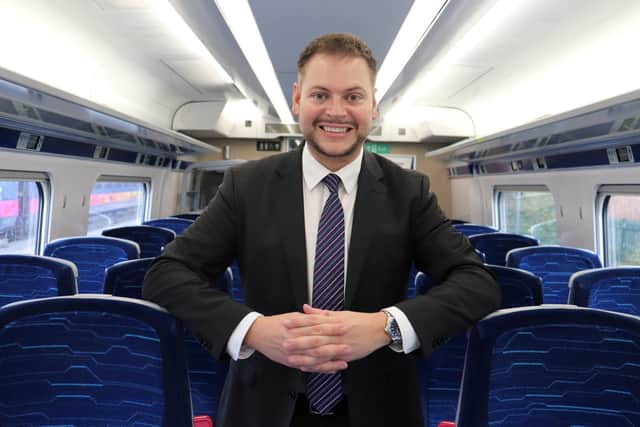I don’t drive anymore and I’ve never looked back: Martijn Gilbert
Not driving anymore has made me a super-user of public transport because I need it, and rely on it, to get me to where I have to be every day.
This daily experience has also made me realise that, as a country, never mind in the North, we still have a long way to go in making our transport networks integrate more effectively for the benefit of customers.
Advertisement
Hide AdAdvertisement
Hide AdOne of the main hurdles is how best to approach the first and last mile of journeys to and from the station – and make it sustainable.


There are plenty of well-developed large schemes, such as those outlined in the Integrated Rail Plan, but there remains the question of how to properly combine at a local level.
It seems that rail and transport authorities, while rightly focused on large-scale infrastructure challenges such as tracks, the network and access, should be bringing bus, taxi and micro mobility operators into the conversation earlier.
Rail station developments often display the tension between car parking and bus service provision.
Advertisement
Hide AdAdvertisement
Hide AdBy involving bus operators in the first stages of discussions I believe this can help to find workable solutions that can exist side-by-side. This will also overcome problems easily created with potential increased car use and congestion in local areas and the associated impact on air quality.
City centre road layouts are a factor too. Where I live in Newcastle, a bus from East Gateshead to the station drops you off a 15-minute walk away, yet the pick-up for the return journey is in a completely different location and only five minutes on foot. Conversely, Hull Paragon is a showcase example of integrated best practice.
I know from my own experience when previously working in Reading that connectivity with bus and rail used to be a very easy side-by-side arrangement, but then new station development saw buses pushed out to five different side streets – very confusing for users.
Integration is also about wayfinding signage, digital information, covered walkways and a host of other elements that enriches the customers experience. In this there needs to be more joined up thinking between travel modes.
Advertisement
Hide AdAdvertisement
Hide AdTicketing is another aspect. We have long-standing, excellent examples of multi-operator schemes across the north such as the West Yorkshire MCard which has been around for some 10 years and smartcard season tickets on Tyne and Wear’s NetworkOne scheme now operate across both bus and Metro.
These can be replicated elsewhere and I would argue will deliver more quickly for customers by initially devising a series of smaller regional schemes rather than attempting a one size fits all approach.
Trying to shoehorn in longer distance rail (a totally different type of purchase) will add cost, complexity and time…. which we don’t have if we’re to make meaningful progress anytime soon.
Martijn Gilbert is Managing Director of Lumo and Hull Trains. He is one of the speakers for a session on transport sponsored by First Bus at the Great Northern Conference on September 11.